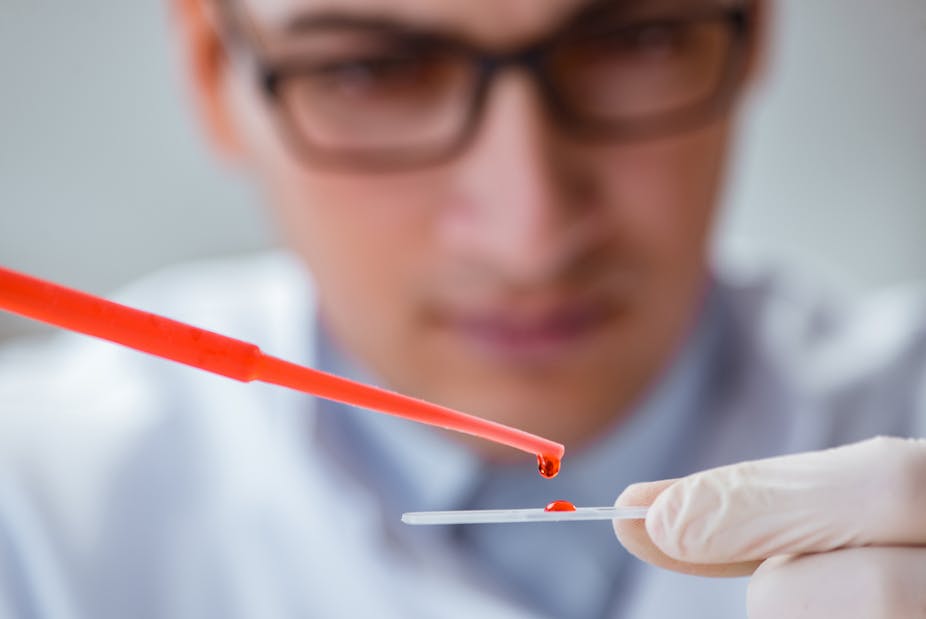A blackmailer steals a compromising letter from a woman of high standing. The police know he is keeping this letter in his home, but they cannot find it. Using the latest forensic tools they search every inch of the apartment, recording their efforts as follows:
We examined the rungs of every chair …. and, indeed, the jointings of every description of furniture, by the aid of a most powerful microscope. Had there been any traces of recent disturbance we should not have failed to detect it instantly.
A single grain of gimlet-dust, for example, would have been as obvious as an apple. Any disorder in the glueing – any unusual gaping in the joints – would have sufficed to insure [sic] detection.
Back in 1844, this description of the police using a powerful microscope with the promise of instant detection would have dazzled readers of Edgar Allan Poe’s The Purloined Letter. Yet this is not what solves the mystery. Instead the private investigator, Auguste Dupin, correctly surmises that the best place to hide such a letter is in plain sight. He finds it on the blackmailer’s mantelpiece.
The story is one of the earliest and best examples of crime fiction. It suggests that science and technology are sometimes not as powerful as empathy or intuition in solving crimes. Indeed, Poe queries science throughout his writings. In one poem he calls it a vulture that preys on the poet’s heart, replacing the magic of a writer’s imagination with its “dull realities”.

Try telling that to modern readers of crime fiction. These days, forensic scientists are one of the great staples of the genre. They are integral to everything from popular TV franchises like CSI and Line of Duty to blockbuster names like Patricia Cornwell and Jeffrey Deaver to many of the works showcasing at the Bloody Scotland festival in Stirling. There is also something about their incredible achievements that we often overlook: they are often a long way from the reality.
Criminal comforts
We love crime fiction because it is reassuring. Yes, human beings are capable of evil and cruel deeds, but criminals are always caught and usually punished. This formula, as WH Auden suggested in a 1948 essay on the genre, restores us to a “state of grace”. It helps us believe we are basically innocent and good, and that criminality is an aberration.
Forensic science amplifies this sense of comfort in crime fiction: it produces evidence that cannot lie; it brings the most cunning of criminals to justice. In a world with no god and no certainty, these fictional scientists fill a void. They let us think that our world can be examined, analysed and rendered legible. They are modern-day magicians whose wizardry reveals indisputable truths.

But does forensic science really hold all the answers? Sadly, no. Val McDermid, one of the big names appearing at Bloody Scotland, is one of the few authors who help us understand this. In Out of Bounds (2016) for example, the police are trying to determine whether a man was murdered or shot himself.
The amount of gunshot residue in his hand is inconclusive, we learn, and not inconsistent with a self-inflicted wound. How can scientific evidence be inconclusive? How come scientists talk of things being “not inconsistent”, rather than dealing in certainties?
This is where the trouble begins for forensic experts. Imagine a scientist giving evidence as a witness in court and having to explain the limitations of their field. Jurors are unlikely to appreciate that forensic evidence often relies on human interpretation; that blood spatter patterns or bite mark analysis do not tell a single, compelling and unambiguous story the way they do in books.
Yet the reality of the uncertainty of forensic science was recently laid bare in relation to the DNA laboratory of the office of New York City’s chief medical examiner. Seen as one of the most sophisticated forensics labs in the world, carrying out work for investigators across the US, certain scientists are now claiming some of its methods are unreliable. A group of prominent New York defence lawyers is calling for the inspections watchdog to carry out an investigation.
Meanwhile, America’s National Institute of Standards and Technology recently accused the forensics industry of lagging other professions when it comes to looking into and resolving errors. It said:
In recent years, high visibility errors have occurred at crime labs in almost every state. These have ranged from simple mistakes, such as mislabelling evidence, to testimony that overstates the scientific evidence, to criminal acts.
In thrillers, forensic evidence almost always leads the investigative team to a satisfying conclusion. We never finish a novel thinking the killer might be exonerated when the evidence is re-examined. Even when all is as it should be, forensic scientists have their work cut out trying to communicate the complexity of the evidence, while explaining how it might be both subjective and reliable at the same time.

To make their case, scientists need much more than hard facts. They need to make their expertise accessible by using similes, metaphors and narrative examples. In fact, they need to be a little like novelists – which is ironic given that they have to dispel some of the misconceptions created by novelists in the first place.
If there is a consolation in any of this, these experts can at least thank novelists for their public image. No matter how hard they have to work to seek and communicate knowledge, at least forensic scientists will always look glamorous while doing so. They might be the victims of our need for reassurance and certainty, but we don’t tend to treat them with the same hostility as Edgar Allan Poe.

